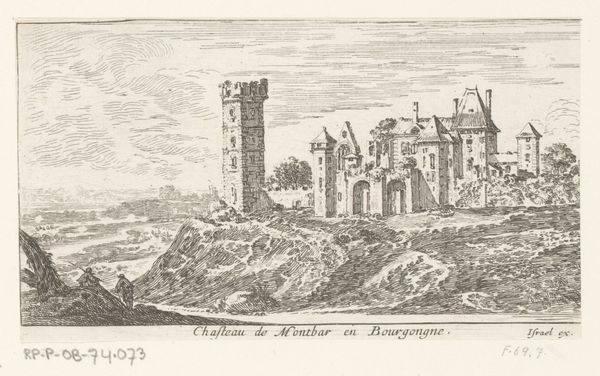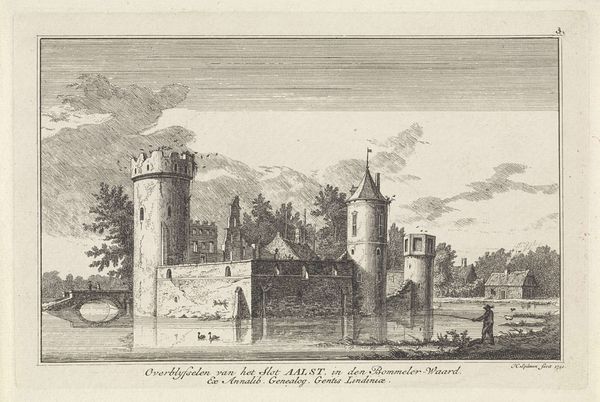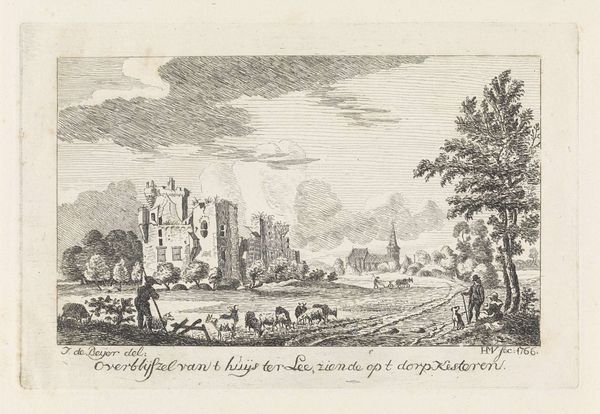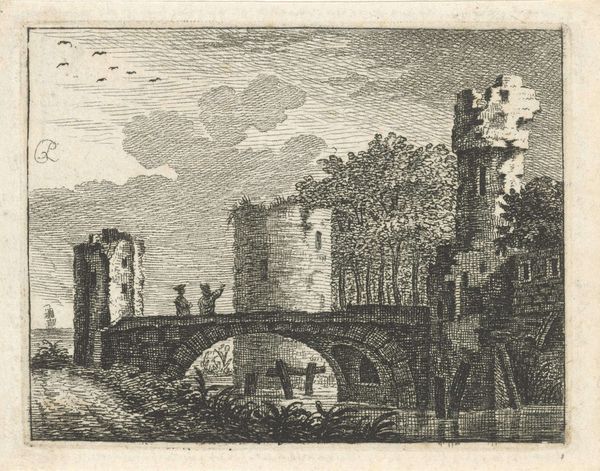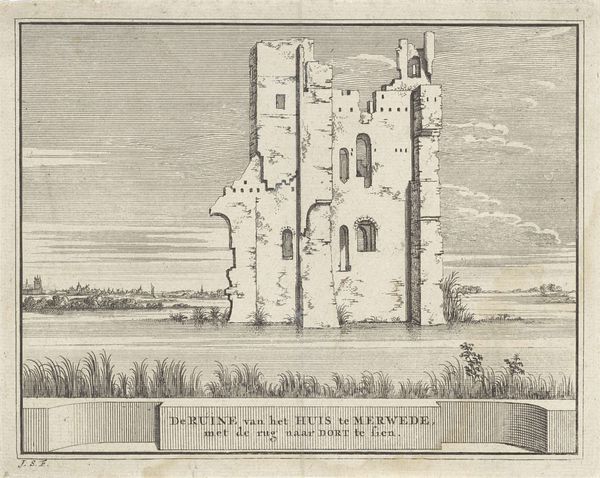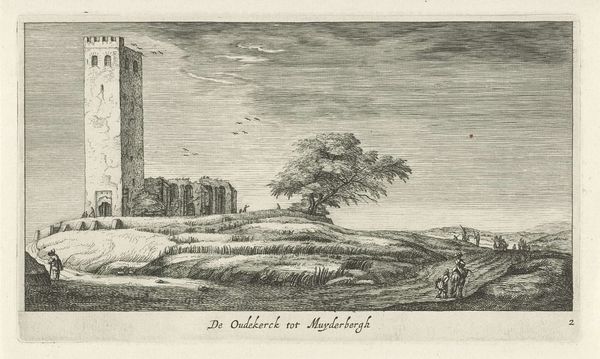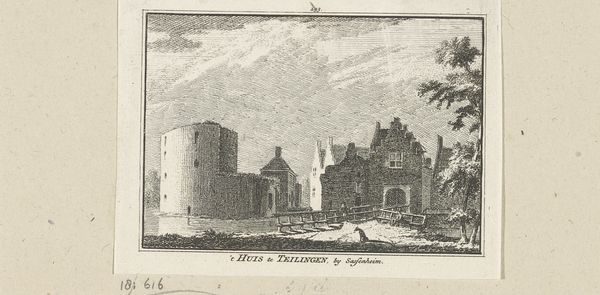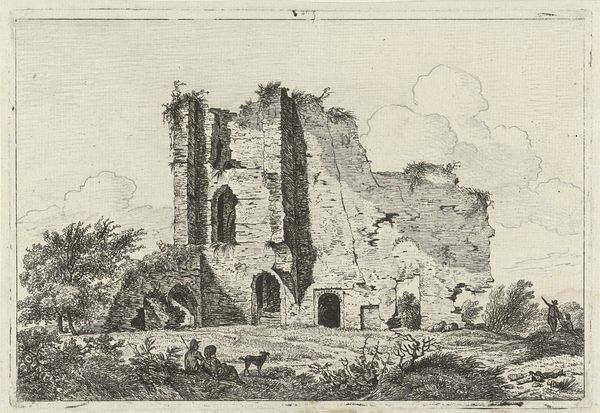
print, etching
#
baroque
# print
#
etching
#
old engraving style
#
landscape
#
history-painting
Dimensions: height 80 mm, width 115 mm
Copyright: Rijks Museum: Open Domain
Curator: This etching, crafted by Abraham Rademaker between 1727 and 1733, depicts "Ruïne van het Oude Stadhuis van Amsterdam, 1652"—the ruins of Amsterdam’s Old Town Hall after the devastating fire. It's a baroque piece currently held at the Rijksmuseum. Editor: The scene has an immediate air of melancholy about it, doesn’t it? The crisp lines somehow accentuate the devastation. It’s like staring into the hollow sockets of a skull – all that's left of a vibrant past. Curator: Exactly. It's more than just a depiction of ruin; it's a commentary on the fragility of power and the ephemeral nature of civic glory. The fire of 1652 was a major event in Amsterdam's history, impacting its social and political landscape. Rademaker captures that feeling of profound loss. Editor: And I wonder what he’s aiming for by revisiting it decades later. Was it a conscious choice to memorialize a historical scar? A political statement, perhaps, reminding the burghers of Amsterdam of their shared tragedy? Curator: Likely a bit of both. Prints like these served a crucial function then; they were visual records circulated widely, shaping public memory. The event, captured in an easily accessible format, could educate younger citizens. Beyond the fire itself, the print highlights architectural style of the era, serving a didactic purpose in the historical record. Editor: I notice the contrast between the fine lines of the buildings still standing, albeit ravaged, and the scattered rubble at the foreground. This contrast creates a visual hierarchy, almost a symbolic division between the resilient structures of society and the chaos that consumes them. Is there some resilience visible even within the ruins? Curator: Absolutely. And the artist uses light masterfully too. Note how the surviving tower looms against the sky, a silent testament to enduring strength despite the tragedy. This speaks volumes about the character of the city itself—damaged, but not defeated. Editor: It strikes me that Rademaker also immortalizes the event in a new way by converting it to etching medium and style. One historical moment layering atop another as the original architecture itself becomes a ruin memorialized by later art style. Curator: Indeed. It becomes a reflection upon reflections. Pondering the meaning of the great hall as it still speaks centuries later opens a lens for us today too, as contemporary witnesses, or interpreters, to learn from. Editor: Right. It feels like we are left standing among the embers with Rademaker himself, invited to draw our own conclusions.
Comments
No comments
Be the first to comment and join the conversation on the ultimate creative platform.
